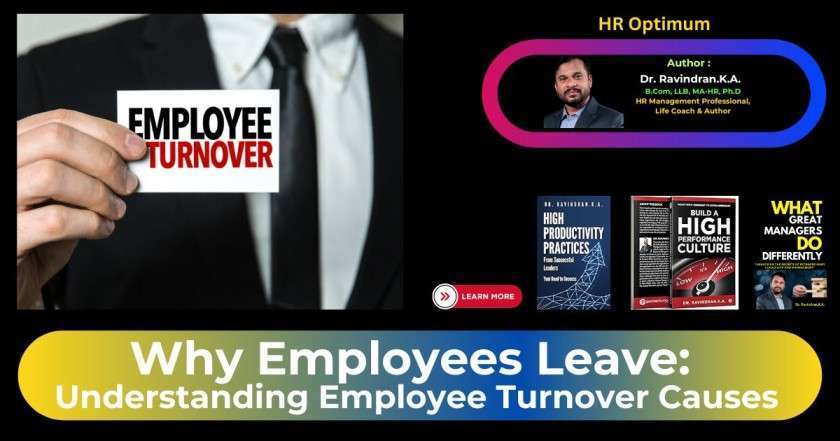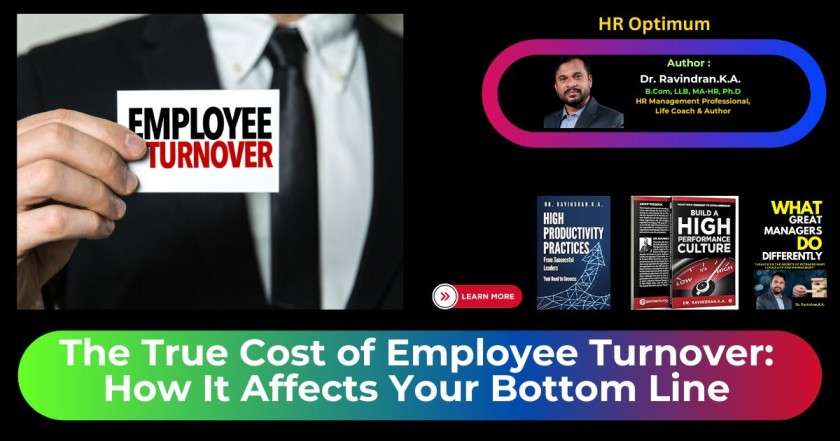“How to Manage Employee Turnover During Times of Change”
Companies are always changing. And keeping top workers has become super important. This is tough because there are not enough skilled employees. So, how do companies keep their best people? The trick is to use strategies that get to the bottom of why employees leave. And, building a work atmosphere that makes them want to stay.
Thank you for reading this post, don't forget to subscribe!Key Takeaways
- Understand the common causes of employee turnover, such as lack of purpose, career growth opportunities, and work-life balance.
- Recognize the significant impact of high employee turnover, including increased costs, decreased morale, and loss of institutional knowledge.
- Implement effective hiring practices to attract the right talent and ensure cultural fit.
- Prioritize employee retention through competitive compensation, comprehensive benefits, and a positive work culture.
- Invest in learning and development opportunities to support employee growth and engagement.
Understand the Causes of Employee Turnover
Employee turnover is a big issue for many companies. There are two main reasons why workers leave: they don’t find their work meaningful, and they don’t see a chance to grow their careers.
Lack of Purpose and Meaningful Work
Workers now look for jobs that match their values and give them a sense of meaning. If a company lacks a meaningful mission, employees may not be as engaged. This can make them unhappy and more likely to leave. Research shows that companies with a clear purpose have fewer people quitting their jobs.
Absence of Career Growth and Development Opportunities
Having a chance to grow and learn new things is key for keeping employees. If they feel like they’re not moving forward, they might start looking elsewhere. Many who left their jobs recently said they did so because they didn’t see a way to improve their careers.
To reduce employee turnover, companies need to tackle these issues head-on. Helping employees feel their work is meaningful, and providing clear paths for growth, can make a big difference. A happy, engaged workforce can save a company a lot of money in the long run.
| Cause of Employee Turnover | Percentage of Employees Impacted |
|---|---|
| Lack of purpose and meaningful work | 49% lower attrition rate in companies with purposeful missions |
| Absence of career growth and development opportunities | 63% of employees cited lack of advancement as a reason for leaving their jobs in 2021 |
“Employees are motivated to work in companies that have a purposeful mission, and the absence of clear pathways for development can lead employees to seek opportunities elsewhere.”
The Impact of High Employee Turnover
High employee turnover greatly affects businesses. It leads to increased costs and lower team morale. This understanding is key for companies wanting a stable and hardworking team.
Increased Costs for Recruitment and Training
To replace an employee costs a lot. This can range from half to two times their salary. Due to turnover, the US loses up to $1.8 trillion each year in productivity costs. Also, attracting new talent becomes hard with a bad company image, increasing recruitment costs.
Decreased Workplace Morale and Productivity
High turnover makes employees unhappy. This can lead to more stress, burnout, and lack of interest. Using employee satisfaction surveys helps keep track of how engaged employees are. As a result, less work gets done since remaining employees have more to do.
Loss of Institutional Knowledge and Disruption of Team Dynamics
When important staff leave, a company loses their knowledge and expertise. This affects projects, how well companies serve their customers, and general operations. Knowing if employees plan to leave through surveys can provide insight into their lack of engagement.
For businesses to succeed, they must address high employee turnover. Figuring out why people leave and keeping those who stay happy are crucial steps. This way, companies can have a reliable and flourishing team.
Hire the Right Talent
In the current job scene, the United States alone had 11.3 million open jobs in May 2022. This makes choosing the right person even more crucial. Today’s talent market is very competitive. With the ‘quit rate’ 25% higher than before the pandemic, and over 60% of workers in India wanting to change jobs, keeping skilled employees is a big challenge for businesses.
Conduct Behavioral Interviews to Assess Cultural Fit
It’s vital to look beyond skills when picking the right hire. Behavioral interviews can show how well a candidate could blend into your company’s culture. By looking at their past actions and decisions, you get a sneak peek into how they might handle your organization’s unique atmosphere.
Involve Peers in the Hiring Process
Having potential colleagues meet the candidate can boost your hiring success. Studies show that 91% improvement in keeping employees longer is seen when companies focus on skills during hiring. Allowing the future team to be part of the hiring interviews can show how well the candidate might join and work with others.
“Hiring the right talent is not just about finding someone who can do the job; it’s about finding someone who aligns with your company’s culture and values.”
Finding the right person goes beyond job qualifications. It’s about fit with your company’s culture and values. Following these methods can help you spot candidates who will not just fill a role, but also add to your organization’s growth and success.
| Key Hiring Strategies | Benefits |
|---|---|
| Conduct Behavioral Interviews | Assess cultural fit and alignment with company values |
| Involve Peer Employees in Hiring | Improve employee retention and team integration |
Prioritize Employee Retention
Keeping your best workers is tough today. The cost of losing them is high, sometimes more than they earn in six to nine months. With work changing quickly, companies need to focus on keeping employees happy to stay ahead. This means using smart strategies to keep their skilled workers happy and dedicated.
A study by Upwork shows that soon, almost 90% more Americans will work remotely. This means companies must change how they keep their teams happy and loyal. By learning what makes employees stay and feel happy, businesses can put in special plans that prevent them from leaving. This keeps their teams strong and working well together.
Cultivate a Positive Work Culture
A great company culture helps keep workers. According to Glassdoor, most people check a company’s culture before joining, and many say it’s why they stay. Cultures that welcome everyone, help them grow, and match their values lower the chances of them leaving.
- Promote work-life balance with flexible schedules and remote work options
- Recognize and reward top performers through frequent, meaningful feedback
- Encourage employee wellbeing initiatives, such as mental health support and wellness programs
Invest in Learning and Development
Helping your team grow is key to keeping them. When they feel their job helps them reach their career goals, they stay and work harder. Showing a clear path for growth and offering training sends a strong message that the company cares about their success.
| Retention Metric | Benchmark | Best Practice |
|---|---|---|
| Employee Tenure | Varies by industry, but the average in the U.S. is around 4.1 years | Strive to increase average tenure by focusing on factors like career development, work-life balance, and a positive company culture |
| Turnover Rate | The average turnover rate in the U.S. is around 12-15% annually | Aim for a turnover rate below the industry average by implementing effective retention strategies and addressing the root causes of turnover |
| Employee Engagement | Only 34% of U.S. employees are engaged in their work | Strive for an engagement rate above 50% by fostering a positive work environment, providing growth opportunities, and recognizing employee contributions |
By focusing on keeping employees happy and growing, companies can keep a strong, loyal team. With competitive pay, chances to grow, and a positive culture, they become the top choice for workers. This way, they keep their best people, who are their biggest strength.
Offer Competitive Compensation and Benefits
In today’s job market, it’s vital to offer good pay and benefits. This helps keep the best employees. Data shows that high salaries and bonuses are key for workers. They look for these in a new job or when deciding to stay at their current job.
Monitor Market Rates and Adjust Salaries Accordingly
Employers should keep an eye on job market salaries. They need to update their own salaries to match. Doing so helps bring in top talent and shows fairness. Surveys say many employers worldwide plan to raise wages in 2022 to stay competitive.
Provide Comprehensive Benefits and Perks
Aside from good salaries, workers look for great benefits and perks. Health insurance and holiday time are top requests. Many also want paid time off for parents. A strong benefits offer can keep employees from leaving. In a study, 75% said they’d stay for benefits they liked.
By providing good pay and benefits, companies can find and keep the best people. This leads to a happier, more loyal, and hardworking team. This, in turn, can help a business succeed in the long run.
“Compensation has a significant positive effect on employee performance and retention in the hospitality industry, emphasizing the importance of providing adequate compensation.”
Foster a Positive Work Environment
Creating a positive work environment key to keeping great staff. It also boosts how much they stay engaged. Now more than ever, businesses need to make sure their culture does just that. They should focus on helping staff thrive, finding a work-life balance, and rewarding great work.
Encourage Work-Life Balance with Flexible Arrangements
Letting workers choose flexible work times or places makes a huge difference.It helps with burnout and makes them more loyal and efficient. This is backed by research showing lower burnout rates and better dedication from staff.
Recognize and Reward Top Performers
Seeing and praising workers does a lot for team morale. Things like thank you notes or shout outs to the team make a big difference. It’s also important to give rewards and incentives for outstanding work, showing it’s valued.
Making a positive work environment, valuing work-life balance, and recognizing achievements are key. They help attract, keep, and inspire the best employees. Not only does this lead to happier employees, but it also helps the business do well in the long run.
Employee Retention through Learning and Development
Investing in learning and development helps keep top talent. It, too, creates a committed team. By showing clear career paths and providing growth opportunities, companies keep their staff engaged. This boosts morale and leads to ongoing success.
Establish Clear Career Paths and Progression Plans
Employees leave if they don’t see a future or lack training. So, it’s vital to map out clear career paths. This helps employees see where they can grow within the company. It tells them the skills they need and how they can move up, driving their growth.
Offer Training and Professional Development Opportunities
- Allocate a budget for staff to attend helpful events or courses.
- Start mentorship programs to share knowledge and develop skills.
- Promote cross-training and job rotations for broader skill sets.
- Use digital platforms for easy access to various training.
- Host training sessions by experts to fill skill gaps and improve teams.
Learning and development investments elevate morale and retention. They also lead to a stronger, more skilled, and engaged workforce. Linking these efforts with company and staff goals is key. This builds a culture of ongoing learning and development. It encourages commitment and success over time.
“94% of employees state they would stay longer with a company if it invested in their learning.”
– LinkedIn’s 2022 Workplace Learning Report
Cultivate a Supportive Company Culture
A strong, supportive company culture keeps employees happy and engaged. Companies that do this see a 33% boost in revenue. This shows the real impact of a good work atmosphere.
Earning trust, creating a diverse environment, and sharing values are keys. Setting clear core values helps in decision-making and affects how workers act. When workers see their beliefs match those of their company, they stay and work harder.
Encourage Open Communication and Feedback
Good communication at work lets everyone know what’s going on and share their ideas. For example, regular town hall meetings can make things clearer and strengthen the leadership-employee bond.
It’s also important to let people give feedback. Being in a place where your opinion counts makes you more loyal. This built-in advantage affects how people see and support their workplace.
| Benefit | Impact |
|---|---|
| Open Communication | Improved performance, decision-making, and transparency of future plans |
| Employee Recognition | Up to 69% increase in work effort |
| Inclusive Practices | All employees feel valued and part of the team |
| Career Growth Support | Strengthens the workforce and fosters a positive company culture |
Encouraging an open, supportive culture leads to better employee involvement and loyalty. This, in turn, boosts success over time.
“Companies with strong values attract and retain employees who share those values, fostering a positive company culture.”
Conclusion
Looking after employee retention during change means getting to the bottom of why employee turnover happens. Using strong talent management and best practices can help. This keeps your team together, saves money on hiring and training, and sets the company up for the future.
To stop people from leaving, you start by hiring well. Providing good pay and benefits is crucial. Creating a happy work atmosphere, helping people grow, and building a caring culture are also key. All these steps help stop the reasons that push workers out. They make employees happier and the company more successful.
Focusing on employee retention and fixing what makes people leave helps a company earn a good name. When customers and talented people see this, they’re more likely to stick around. Being ready to handle employee turnover in changing times is a must for success today.
FAQ
What are the main causes of employee turnover?
Employee turnover happens because of several key factors. These include not offering competitive pay and good benefits. Lack of chances to grow in the company also plays a big part.
Employees often leave if they don’t have a good work-life balance. If their managers aren’t supportive or if the company’s culture doesn’t match their values, they might go, too.
What is the impact of high employee turnover on a business?
When a business has a high staff turnover, it faces many problems. It has to spend more on hiring and training. This can lower morale and productivity. Losing experienced staff also means losing valuable knowledge.
The whole team dynamic may also suffer. Plus, a reputation for high turnover can hurt how people see the company.
How can organizations hire the right talent and ensure cultural fit?
One way to get the right people is through behavioral interviews. They help see if someone fits with the company culture. It’s also good to let current team members be part of the hiring process.
Finally, getting to know candidates well, through face-to-face or video interviews, can make sure they’ll be a good fit.
What are effective employee retention strategies?
To keep employees happy and stay, companies must do several things. They should offer good pay and benefits, as well as a positive work environment. Giving flexible working options is a big plus.
Companies should also celebrate and reward good work. They need to help their staff grow and feel supported at work.
How can companies monitor and adjust compensation to retain top talent?
To keep their best people, companies should know what the job market pays. They should offer fair salaries from the start. Giving raises often is important, too.
They need to make sure their pay doesn’t cause someone good to leave. This is why talent management is crucial.
What role does company culture play in employee retention?
Having a positive and welcoming culture is key for keeping staff. This culture should support everyone’s values and beliefs. It should encourage open talks and feedback.
If employees feel the company’s culture doesn’t match their own, they might look for work elsewhere. So, a good culture is essential to keep the team happy.
How can learning and development opportunities impact employee retention?
Offering chances for learning and growth keeps employees satisfied. This includes clear paths for career advancement and regular training and development. Such actions can lift morale and dampen the wish to leave.
 hroptimum
hroptimum



